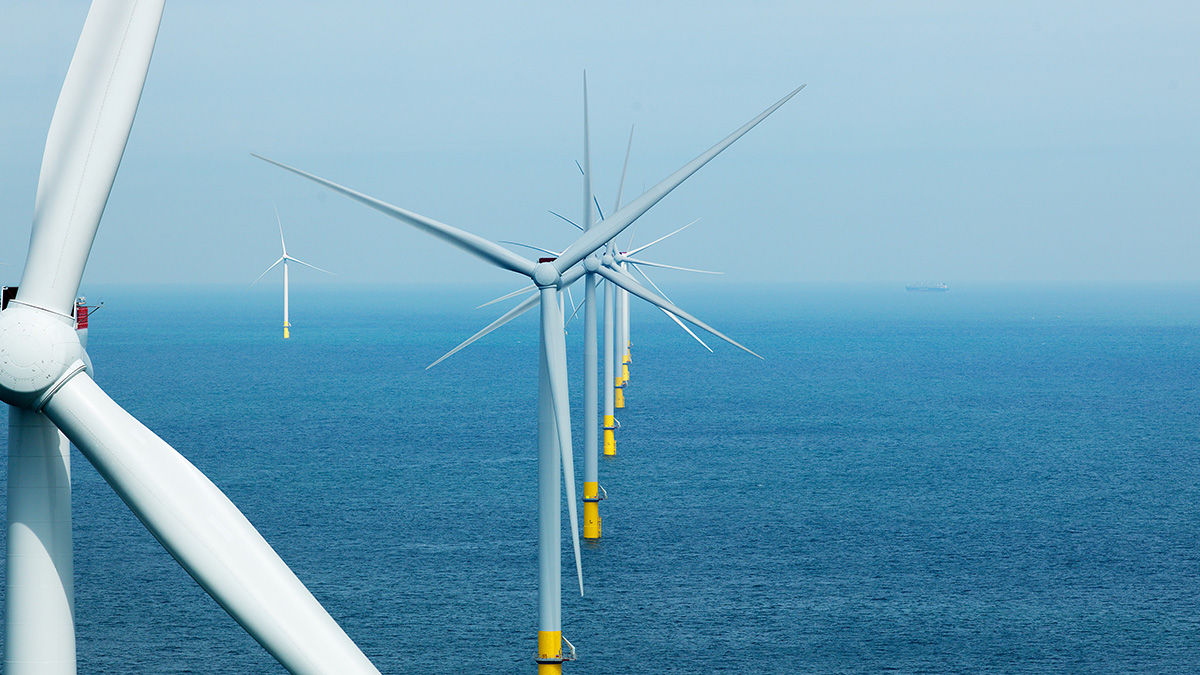News
New UK Government shows impressive determination on wind energy
1 August 2024
The new Labour Government under Prime Minister Keir Starmer has been in office for less than a month. Yet they have already initiated several significant reforms to accelerate the expansion of onshore and offshore wind. Just yesterday the Government raised the budget for the upcoming contract for difference auction round (AR6) to a record £1.56bn. The majority of that, £1.1bn, will be available for bottom-fixed offshore wind. But that’s not all. The Government has also lifted the de-facto ban on onshore wind in England and wants to advance seabed leases in a new collaboration between GB Energy and The Crown Estate.
Wind energy is the cornerstone of the new UK Government’s goal to fully decarbonise UK electricity consumption by 2030, along with a commitment to double onshore wind and quadruple offshore wind capacity by 2030.
The next contract for difference auction round (AR6) is taking place this summer. Successful projects are expected to be announced in September.
Big push for bottom-fixed and floating offshore wind
Yesterday the Government announced an enhanced budget for AR6. They raised the total budget by £500mn to a record £1.56bn, of which £1.1bn will be allocated for bottom-fixed offshore wind. That’s 38% higher than the £800mn offshore wind budget proposed under the previous UK Government and is an important move that will allow for increased offshore wind deployment.
Inflation and higher input costs have increased the costs of developing new offshore wind farms. The UK Government has understood that. Increasing the overall budget for AR6 is the right thing to do. This in combination with the already agreed higher price cap for single bids of £73/MWh will lead to strong industry interest and healthy competition between project developers.
In the previous auction round in 2023 (AR5) the Government failed to account for these new price realities and maintained a strict price ceiling of £44/MWh. The result: not a single offshore wind project bid last year and so the UK lost a year of offshore wind development.
“This is a very positive development. The UK Government’s decision will strengthen its energy security and increase its economic competitiveness. It will also help to create tens of thousands of new jobs in wind energy and restore the UK as a global leader in renewables”, says Phil Cole, Director of Industrial Affairs at WindEurope.
The Government has also raised the budget available for “emerging technologies”, such as floating offshore wind by £165m to £270m – a 61% increase and a clear sign of confidence for the UK’s floating offshore wind industry.
The budget increase is welcome, but it will not unlock investments in all of the UK’s existing shovel-ready projects. The UK Government should maximise the amount of capacity it secures in every annual auction going forward to stay on track to meet its 2030 targets by setting budgets accordingly.
Positive signs for onshore wind
Already on their first full working day in power the Labour Government has started to lift the de facto ban on onshore wind in England. In the meantime they have announced that they will set up an onshore wind taskforce to unlock the barriers to deployment and restore a sizeable pipeline of new onshore wind projects in England. The taskforce will be chaired by UK Secretary of State for Energy Security and Net Zero, Ed Miliband, and the CEO of EDF Renewables UK, Matthieu Hue. Members of the taskforce will include various regulatory bodies as well as the UK’s renewable energy trade association, RenewableUK.
The Government further increased Pot 1 of the upcoming CfD auction round, where onshore wind and solar technologies will compete, by £65mn to £185mn.
GB Energy and The Crown Estate to collaborate on de-risking, seabed leases and supply chain
The Government is setting up Great British Energy (GB Energy), a state-owned energy generation company. GB Energy will invest in early-stage renewables projects, reduce private investors’ risk and facilitate private investment into clean power. With its budget of £8.3bn over five years, GB Energy aims to leverage up to £30-60bn of private investment into renewable energy projects.
GB Energy will collaborate with The Crown Estate, a public corporation that runs the British monarchy’s portfolio of land and property holdings, including the seabed around the UK. Between them GB Energy and The Crown Estate will cut the time it takes to build new wind farms with the goal of unlocking 20-30 GW of additional offshore wind seabed leases by 2030.
The Crown Estate can now borrow money, leveraging the seabed lease fees it charges developers to raise capital. This allows it to invest in the UK wind energy supply chain which will include much-needed port infrastructure and additional manufacturing capacity.
However, GB Energy must not disrupt the billions of pounds of private investment the UK needs. It should rather complement existing investments by focusing on less developed technologies such as floating offshore wind. GB Energy will also incentivise onshore wind community energy projects.
The UK Government has also unveiled plans to create a new National Wealth Fund. The fund would invest in clean energy and other infrastructure projects. Some £7.3bn of additional funding will be allocated through the UK Infrastructure Bank so that investments can start immediately. This aims to catalyse private investment at greater scale.


